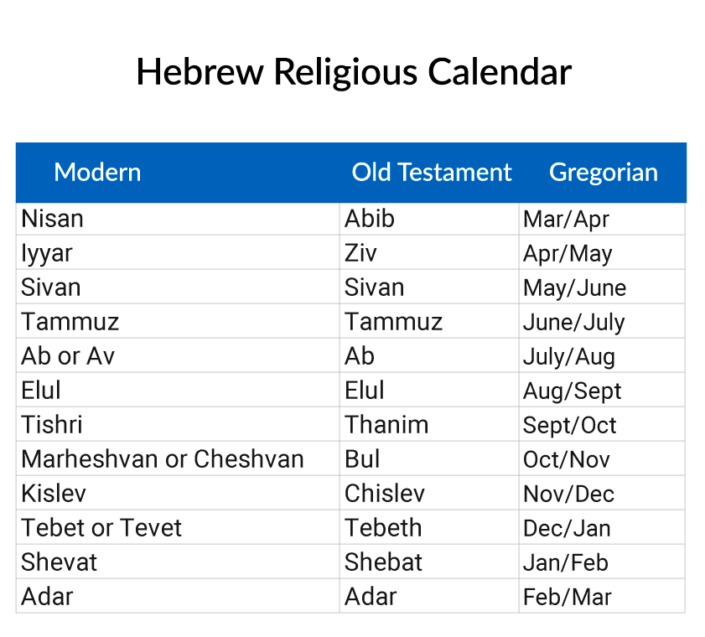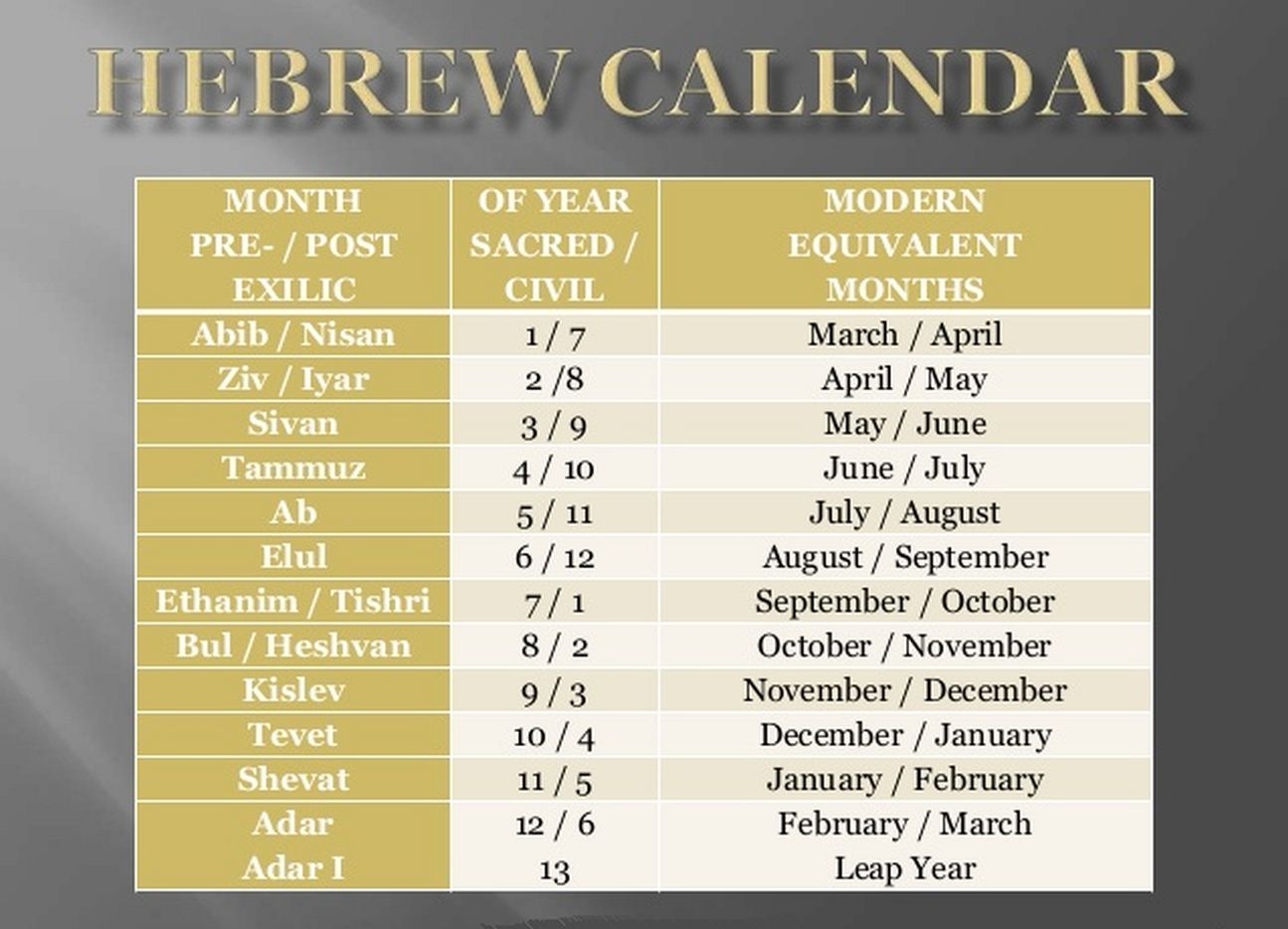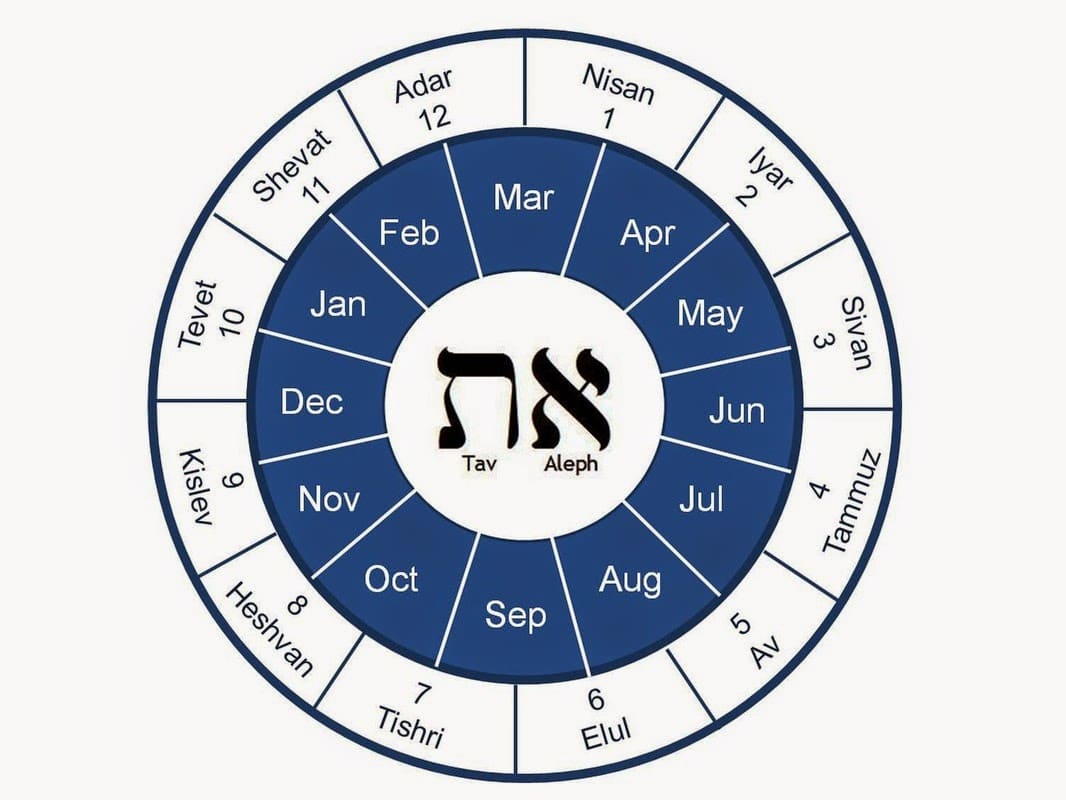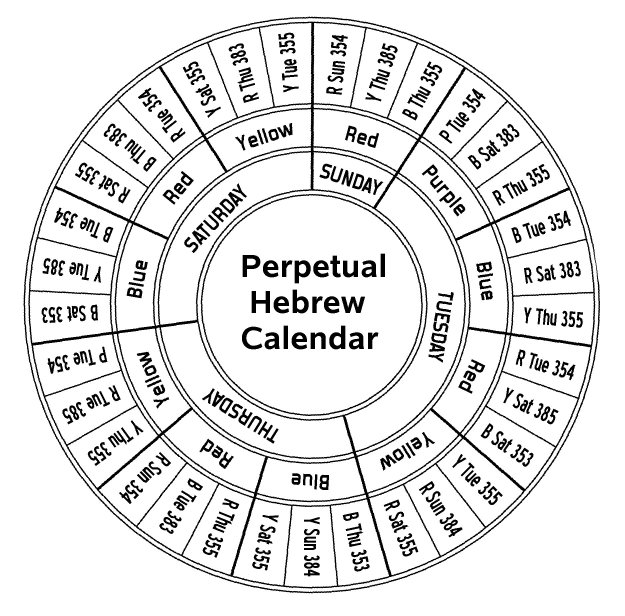Beginning Of Jewish Calendar - However, the jewish new year is in. Every month is either 29 or 30 days long, beginning (and ending) on a special day known as rosh chodesh (“the head of the month”). This causes a calendar drift where the holidays and seasons. As a result, the jewish calendar is one day longer over approximately every 216 years. As we enter the first month, we take a deeper look at the jewish calendar: How has it changed over time? The first month of the jewish calendar is the month of nissan, in the spring, when passover occurs.
How has it changed over time? As a result, the jewish calendar is one day longer over approximately every 216 years. The first month of the jewish calendar is the month of nissan, in the spring, when passover occurs. However, the jewish new year is in. This causes a calendar drift where the holidays and seasons. Every month is either 29 or 30 days long, beginning (and ending) on a special day known as rosh chodesh (“the head of the month”). As we enter the first month, we take a deeper look at the jewish calendar:
Every month is either 29 or 30 days long, beginning (and ending) on a special day known as rosh chodesh (“the head of the month”). How has it changed over time? The first month of the jewish calendar is the month of nissan, in the spring, when passover occurs. However, the jewish new year is in. As a result, the jewish calendar is one day longer over approximately every 216 years. This causes a calendar drift where the holidays and seasons. As we enter the first month, we take a deeper look at the jewish calendar:
Hebrew Calendar Day Ibbie
Every month is either 29 or 30 days long, beginning (and ending) on a special day known as rosh chodesh (“the head of the month”). The first month of the jewish calendar is the month of nissan, in the spring, when passover occurs. As a result, the jewish calendar is one day longer over approximately every 216 years. However, the.
Hebrew Calendar Abib Jessi Lucille
The first month of the jewish calendar is the month of nissan, in the spring, when passover occurs. How has it changed over time? As a result, the jewish calendar is one day longer over approximately every 216 years. As we enter the first month, we take a deeper look at the jewish calendar: However, the jewish new year is.
Printable Jewish Calendar First Month Free download and print for you.
The first month of the jewish calendar is the month of nissan, in the spring, when passover occurs. As a result, the jewish calendar is one day longer over approximately every 216 years. This causes a calendar drift where the holidays and seasons. Every month is either 29 or 30 days long, beginning (and ending) on a special day known.
First Day Of Hebrew Calendar Lorie Raynell
How has it changed over time? This causes a calendar drift where the holidays and seasons. As we enter the first month, we take a deeper look at the jewish calendar: The first month of the jewish calendar is the month of nissan, in the spring, when passover occurs. As a result, the jewish calendar is one day longer over.
What Is The 7th Month Of The Hebrew Calendar Eliza Sylvia
This causes a calendar drift where the holidays and seasons. As a result, the jewish calendar is one day longer over approximately every 216 years. How has it changed over time? The first month of the jewish calendar is the month of nissan, in the spring, when passover occurs. As we enter the first month, we take a deeper look.
How To Read The Jewish Calendar Ursa Alexine
How has it changed over time? As we enter the first month, we take a deeper look at the jewish calendar: The first month of the jewish calendar is the month of nissan, in the spring, when passover occurs. As a result, the jewish calendar is one day longer over approximately every 216 years. However, the jewish new year is.
Seventh Month In Hebrew Calendar Printable And Enjoyable Learning
This causes a calendar drift where the holidays and seasons. Every month is either 29 or 30 days long, beginning (and ending) on a special day known as rosh chodesh (“the head of the month”). The first month of the jewish calendar is the month of nissan, in the spring, when passover occurs. How has it changed over time? As.
All about the Jewish Calendar
However, the jewish new year is in. As a result, the jewish calendar is one day longer over approximately every 216 years. The first month of the jewish calendar is the month of nissan, in the spring, when passover occurs. How has it changed over time? This causes a calendar drift where the holidays and seasons.
First Month Of The Jewish Calendar Biddie Lizabeth
The first month of the jewish calendar is the month of nissan, in the spring, when passover occurs. However, the jewish new year is in. Every month is either 29 or 30 days long, beginning (and ending) on a special day known as rosh chodesh (“the head of the month”). As we enter the first month, we take a deeper.
First Day Of Hebrew Calendar Lorie Raynell
How has it changed over time? As a result, the jewish calendar is one day longer over approximately every 216 years. As we enter the first month, we take a deeper look at the jewish calendar: Every month is either 29 or 30 days long, beginning (and ending) on a special day known as rosh chodesh (“the head of the.
Every Month Is Either 29 Or 30 Days Long, Beginning (And Ending) On A Special Day Known As Rosh Chodesh (“The Head Of The Month”).
The first month of the jewish calendar is the month of nissan, in the spring, when passover occurs. How has it changed over time? As we enter the first month, we take a deeper look at the jewish calendar: This causes a calendar drift where the holidays and seasons.
However, The Jewish New Year Is In.
As a result, the jewish calendar is one day longer over approximately every 216 years.









